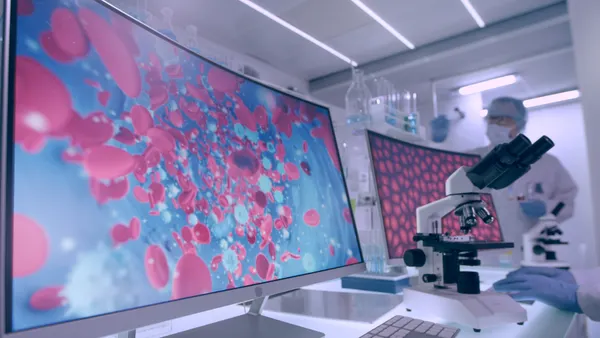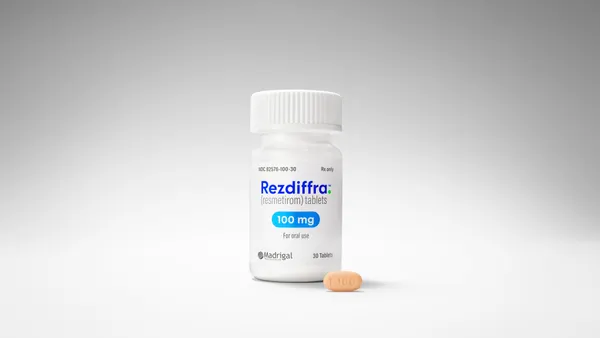66 J u n e 20 03 PharmaVOICE PHARMA TRAX SALES, MARKETING, AND R&D TRENDS AFFECTING THE HEALTHCARE INDUSTRY 56 MILLION U.S. ADULTS GOONLINE for Information on Chronic Health Conditions Data gathered by Manhattan Research LLC’s ePharma Analytical Insight Module (AIM) reveals that 56.3 million U.S. adults go online to gather informa tion about chronic health conditions. Results gathered using ePharma AIM show that 45.2 million consumers with chronic health conditions and 43.6 million diseasespecific information seekers actively use online health information and services (a total of 56.3 million separate individuals). Internet use among online consumers with specific chron ic health conditions was found to vary widely depending on the therapeutic segment. Within a recent three month period, Internet use ranged from 15% to more than 60%. Online consumers with chronic health condi tions were found to be 20% more likely to recall pharmaceutical advertising, regardless of channel, compared with offline consumers with chronic health conditions. Furthermore, those seeking information online were found to be 1.9 times more likely than their offline counterparts to request a branded prescrip tion from their physician. AVENTIS BECOMES TOP SPENDER in Oncology Marketing in the United States A recent study has revealed that Aventis Pharmaceuticals Inc. has sur passed AstraZeneca Pharmaceuticals LP as the leading spender on oncology related marketing activities in the United States. The cumulative marketing spend ing of the 10 oncology franchises analyzed reached $745 million in 2002, with Aventis accounting for more than 15% of the total. The study, Competitive Benchmark ing of Oncology Sales and Marketing Organizations in the United States: Key Expenditures and Organizational Approaches (2nd Edition), was conduct ed by PharmaForce International. Using a propri etary model that incorporates more than 50 cost driving variables, the study highlights that most oncology franchises have substantially increased spending on CME programs, in part to compensate for reduced expenditures on activities discouraged by the new PhRMA guidelines. Aggregate spending on four important activities — national conventions, Phase IV trials, physician lunch and dinner programs, and CME programs — accounted for 75% of total spending. Relatively smaller amounts were spent on journal advertise ments,cooperative and advocacy group grants, and Internetbased initiatives. The study also finds that Amgen Inc.nowhas the largest oncology salesforce, with nearly 450 sales representatives, and that Eli Lilly & Co. and Glaxo SmithKline pay the highest starting salaries, with newly hired oncology representatives receiving basepay salaries of $80,000. Market for HIV Drugs FACES FIRST SLOWDOWN Research from Datamonitor Plc. finds that the global market for HIV drugs (antiretrovirals) will experience a gradual mediumterm decline in growth. Yearonyear growth is projected to decrease from 19% in 2003 to 5% by 2010. The slowdown is expected to be driven primari ly by the use of new treatment strategies to avoid patient overexposure to drugs and the fact that inefficient capture of the prevalent patient popula tion is leading to market saturation. Datamonitor estimates that up to twothirds of HIVinfected individuals across the European Union and Unites Stated remain untreated. Increased com petition between products because of a lack of product differentiation also is affecting the market. “The global HIV market is witnessing a slowdown in growth, with a 1998 revenue growth rate of 34% compared with an estimate of 14% in 2002,” says Dr. Dheeraj Khiytani, senior HIV analyst at Datamon itor.“The reasons for the decline are multifold,but include a pos sible saturation of currently treated patient populations, the introduction of combina tion products, and the limited number of currently marketed antiretrovirals.” Dr. Khiytani also believes that many physicians are mov ing toward using novel treatment strategies such as structured treatment interruptions (STIs),drug holi days, and delayed onset to treatment to minimize drug toxicity and avoid patient overexposure to a single drug. Without novel strategies to target the significant untapped patient pool, the current HIV market is expected to gradually reach saturation. The NRTI drug class (the first class of HIV drugs to be launched), recorded global revenue of $3.1 billion in 2002,accounting for about 53% of the overall HIV market. Datamonitor predicts decreased use of the NRTI drug class, with forecast sales growth declining from 19% in 2003 to 5% by 2010, driving the overall decline in global market growth. The Datamonitor report, Market Dynamics: HIV — Combating a Market Slowdown, suggests that market growth is dependent on the success of new drugs and on the rate at which novel therapeutics can be introduced successfully to the market. Drug manufacturers can counter erosion of the HIV mar ket by developing strategies to improve drugrelat ed toxic side effects and dosing profiles, Datamoni tor analysts say. In addition, Datamonitor analysts estimate that 66% of the HIV prevalent population across Europe and the United States remains untreated.This means it is imperative for companies to capture the untapped patient population for the HIV market to continue to grow. Study Reveals ONLINE PRESCRIPTION DRUG SALES BY FOREIGN PHARMACIES SMALL But Likely to Grow Jupiter Research estimates that U.S. consumers spent $700 million to purchase prescription drugs from foreign online pharmacies, including those in Canada, during 2002. This amount represents less ONLINE CONSUMERS WEREFOUNDTO BE 1.9 TIMES MORE LIKELY THANTHEIROFFLINE COUNTERPARTSTO REQUEST A BRANDED PRESCRIPTION FROM THEIR PHYSICIAN. Without novel strategies to target the significant untapped patient pool, the current HIV market will gradually reach saturation, Dr. Dheeraj Khiytani says. 67 PharmaVOICE J u ne 20 03 PHARMA trax than 0.4% of the total U.S. prescription drug market. Experts at Jupiter Research,however, forecast increased growth of this market,mainly through online storefronts, since fac tors such as unanswered promises of drug benefits for seniors and the uninsured are likely to keep enforcement by regulatory authorities to a mini mum. Foreign Online Pharmacies:Sizing the U.S.Market for Imported Prescription Drugs — a consumer sur vey conducted by Jupiter Research in March 2003 — found that less than 3% of online chronic drug users purchase prescription drugs directly from for eign online pharmacies. The current threat to the U.S. prescription drug market is limited because inadequately insured seniors and lowwage workers — the consumers with the greatest motivation to seek out lowcost drugs — are underrepresented online. The study found, however, that kioskfacilitated channels pose the most immediate threat to U.S. prescription drug sales; inexperienced online con sumers and some offline consumers use these online storefronts to process their prescriptions to save costs. “Although the current market size for cheap pre scription drug imports is less than 0.4% of the over all market, the biggest worry to U.S. pharmaceutical manufacturers and retail pharmacies is the potential of the kiosk and Internet cafefacilitated channel because of lax enforcement by the FDA,” says Monique Levy, analyst at Jupiter Research. Researchers at Jupiter say the most effective lever that U.S. pharmaceutical manufacturers have for limiting foreign trade is to continue to restrict supply to, for example, Canadian wholesalers. IMS Figures Show PRESCRIPTION DRUG SALES INCREASING Sales of prescription drugs in North America rose 11% during the 12 months that ended Jan.31,2003, according to figures from IMS Health Inc. North American sales totaled $155.4 billion for the year. U.S. sales totaled $148.2 billion during the period, also reflecting an 11% gain from the year before.Sales of drugs in Canada rose 15% to $7.2 bil lion, IMS reports. Pharmaceutical sales in Europe gained 5% from the previous year, to a total of $61.1 billion.Germany was the leader in European sales with $17.9 billion, up 8%. France had sales for the 12 months of $14.9 billion, up 1%; the United Kingdom had sales of $11 billion, up 9%; Italy had sales of $10.6 billion, up 2%; and Spain had sales of $6.7 billion, up 9%. Sales in Japan, which unlike other markets includes hospital sales in its totals, were $47.6 billion during the period, up 1% from the year before. Latin American sales rose 15% in the period,driv en by Mexico, which recorded an 8% increase to $6.1 billion. IMS analysts say the region could have had better sales if not for steep declines in the other top two markets, Brazil (down 8%) and Argentina (down 65%). PRESCRIPTION DRUG CONFUSION Becoming Widespread in the United States Nearly one in 10 children have been given med ication incorrectly because of translation difficulties. The finding comes from a recent survey of 592 peo ple who speak English as a second language in some of the fastestgrowing communities in the United States. TransPerfect Translations’ study found that 33% of respondents said they have left their doctor’s office without being clear about their med ications because of a language barrier. Respondents — 28% of those surveyed — reported guessing at the proper dosage because they were not sure what their prescription said. Additionally, because they didn’t completely under stand that there are things that should not be done when taking drugs, 17% were found to have per formed an activity they shouldn’t have while on their medication. Respondents included people who spoke English as a second language, a large number of whom were native Spanish, Chinese, Hindi, and Russian speakers. The effects on the Spanishspeaking communi ty were found to be almost epidemic in proportion to other groups — with more than half of the Span ishspeaking participants responding that they had difficulty understanding the proper use of a pre scription drug. “Clearly, this is a very serious problem,”says Liz Elt ing, president and CEO of TransPerfect Translations. “I have seen terrible and even lifethreatening mistakes. One woman who was surveyed told us her mother had passed away because of improp er use of drugs because of a language barrier. One word could be deadly.An example is the English word `once’on aprescription that indicates taking adrugone time a day. In Spanish,`once’means 11.” Chinesespeaking respondents had the fewest problems understanding their medications, while Russianspeaking and Spanishspeaking respon dents had the most difficulty.For example,52% of the MORE THANHALF of the SPANISHSPEAK ING respondents found it impossible to fully understand their prescription drugs because of language difficulties MORETHANHALF of SPANISHSPEAKING respondents said there was an unclear term on their prescription drug — 10% of those say it was dosage that confused them the most, while 6% said they didn’t understand the medical terminology that was used 47% of SPANISHSPEAKING patients have described a bad experience because of a language barrier — 9% had trouble determining the meaning of before, with,or after their meals 44% of SPANISHSPEAKING participants said they have at one time taken the wrong dosage because they had trouble translating the instructions into Spanish,while only 15% of Russianspeaking participants said they have taken the wrong dosage 33% of ALL respondents surveyed have left the doctor’s office without being fully clear about their medication 29% of SPANISHSPEAKING participants know of an elderly relative that has taken medication improperly because he or she didn’t understand the instructions 28% of ALL respondents guessed at the proper dosage to take because they weren’t sure what it said 17% have performed an activity that they shouldn’t have while on their medication 16% of HINDISPEAKING participants said there was a term that was unclear on their medication due to their inability to fully translate the instructions from English 12% of HINDISPEAKING participants admitted they had difficulty with the pharmacist’s explanation of their prescription drug because of a language barrier 12% of SPANISHSPEAKING participants said they drank alcohol while on their medication because they didn’t understand the instructions, and 8% drove a car when they shouldn’t have been operating heavy machinery 11% of RUSSIANSPEAKING respondents said that they had trouble understanding the instructions for Zocor, while only 1% misunderstood the instructions for Viagra Source:TransPerfect Translations, New York. For more information, visit transperfect.com. INTERPRETING THE FACTS According to Monique Levy, analyst at Jupiter Research, the current market size for cheap prescription drug imports is less than 0.4% of the overall market. Those translating prescription drug information must be experts not only in the language but also in the field of medicine. Simply using a bright language student or doctor’s assistant who may be bilingual could put the patient at risk, says Liz Elting. Liz Elting 68 J un e 20 03 PharmaVOICE Russianspeaking participants and 57% of the Span ishspeaking participants said they found prescrip tion drugs impossible to fully understand because of language difficulties.But only 19% of the participants of Indian descent and 8% of Chinesespeaking par ticipants responded the same way. AntiOsteoporosis Drugs to Benefit from DECREASES IN HRT PRESCRIBING Antiosteoporosis drugs are benefiting from the steep decline in prescriptions for hormone replace ment therapy (HRT), according to a Market Mea sures/Cozint study. Onceweekly dosing forms of Actonel and Fos amax are expected to experience sizable increases in usage during the next six months,as physicians dras tically decrease their prescribing of both oral and transdermal HRT and estrogen replacement therapy (ERT) regimens.The dramatic reductions in hormone therapy are in response to the Women’s Health Initia tive’s decision to halt its HRT research after discover ing considerable health risks to patients. As a result, physicians are turning to other agents to prevent osteoporosis. Although weekly dosing forms of antiosteo porotic agents are expected to rise, daily dosing forms will continue their downturn. The proportion of physicians planning to increase their usage of both the weekly and daily forms of Fosamax is antic ipated to fall from 64% to 48%.For Actonel,however, the net change indicates substantial growth — with the percent of physicians planning to increase their usage of both forms of the drug rising from 47% last year to 56% this year. The jump in the number of doctors planning to increase their Actonel prescrib ing suggests that Actonel is garnering more of HRT’s share than Fosamax. Evista also is expected to achieve a substantial increase in use. During the next six months, 43% of physicians plan to write more Evista prescriptions. In addition, most physicians surveyed intend to use Forteo — an injectable parathyroid hormone product launched in January — in combination with, or in sequence with, another antiosteoporotic agent, most likely a biphosphate. Physicians most often named Fosamax as the productthey intend to use with Forteo, with Actonel getting the second highest number of mentions. Based on a selfadministered Web survey of 325 physicians, the study, MDTreatment of Osteoporosis, also found that physicians are treating more than 80% of diagnosed osteoporosis patients with pre scription drug therapies.They also were found to be using prescription agents as preventive measures for half of their atrisk patients who already are showing low bone mass. Doctors are using prescription agents with only a small percentage of atrisk patients who are not yet PHARMA trax demonstrating low bone mass. Ob/gyns and rheumatologists, however, are most likely to use prescription drugs with these patients. Study Finds that PHYSICIANS PREFER ELECTRONIC DETAILS A recent TabletPC study, conducted by Pros apeTechnologies and a leading phar maceutical company, found that physicians strongly support the use of TabletPCs for detail encounters. During a 12day infield study, pharmaceutical representatives using the Proscape system were able to survey 127 neurological specialists about their feelings toward the TabletPC and the electron ic content. By an almost 21 margin, the physicians whowere detailed with theTabletPC preferred tech nology to a paperbased approach.Of the physicians who were detailed, 66% expressed a positive prefer ence for the electronic visual aid. About 85% of physicians surveyed rated the quality of the electronic visual aids as high. When asked about the TabletPC device itself, 71% of those physicians surveyed said the TabletPC added value to the representative’s presentation. About 94% of the physician’s surveyed said they prefer representatives to continue to use an elec tronic visual aid. The average time spent on a physi cian call with the electronic visual aid (visual aid only portion of the call) was 27 minutes and 59 seconds. This time represents a 52% increase in call duration from the surveyed company’s average of 18.4 min utes per call with paperbased visual aids. DATAMONITORPLC.,NewYork and London, is a business information company specializing in analysis for six industry sectors:automotive,consumer markets, energy, financial services, healthcare,and technology.For more information, visit datamonitor.com. IMS HEALTH INC., Fairfield, Conn.,applies business intelligence about the pharmaceutical and healthcare markets to transform pharmaceutical transactions into strategic insights. For more information,visit imshealth.com. JUPITER RESEARCH,Darien,Conn.,a unit of Jupitermedia Corp.,provides global realtime news, information, research,and media resources for information technology and Internet industry professionals.For more information,visit jupitermedia.com. MANHATTANRESEARCH LLC, NewYork, helps healthcare and lifesciences organizations adapt,prosper, and maximize opportunities in the networked Follow up economy. For more information,visit manhattanresearch.com. MARKETMEASURES/COZINT,East Hanover,N.J., is a NOPWorld Health company, which is a supplier of primary research to the global healthcare community.For more information,visit cozint.com. PHARMAFORCE INTERNATIONAL, Reading, Pa., is a division of Strategic Reports Inc. that focuses on pharmaceutical sales and marketing benchmarking.For more information, visit pharmaforce.biz. PROSCAPETECHNOLOGIES,Fort Washington,Pa.,integrates marketing and sales information into a single, powerful, realtime environment,eliminating the disconnect between organizations.For more information, visit proscape.com TRANSPERFECTTRANSLATIONS,New York,provides a full range of services in more than 100 languages to multinational companies.For more information,visit transperfect.com. 6 High Value 5 4 3 2 1 No Additional Value PHYSICIAN RATING OFTABLETPC’SVALUE TO AREPRESENTATIVE’S PRESENTATION 38% 23% 23% 15% 13% 7% Source: Proscape Technologies, Fort Washington,Pa.For more information, visit proscape.com. Of those physicians surveyed, 71% responded that the TabletPC adds value to the representative’s presentation.
An article from










